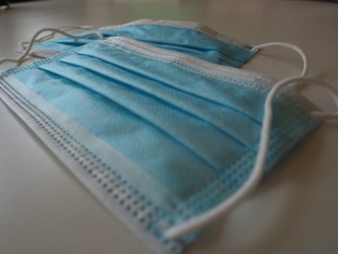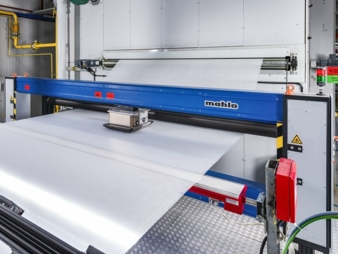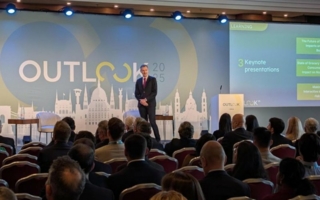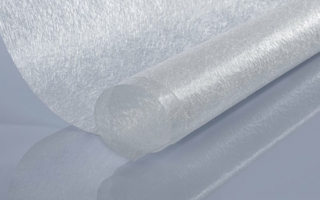20/05/2020 – Infrared technology — auf Deutsch lesen
Corona: Systems for process control and quality measurement by Mahlo
Non-nuclear measurement for spunlaced nonwovens
In a nonwovens line, the moisture content after spunlacing and the basis weight and residual moisture profile after drying are important parameters for ensuring quality and optimizing the production process. The production process has to run in such a way that the product is guaranteed to have the desired functions, but still be as cost-effective as possible for the manufacturer. The key to success is automated measurement and control of these essential parameters. For example, if the weight does not correspond to the specifications, this can lead to errors in functionality, but also to unnecessarily high raw material consumption.
A fleece that is too light for medical masks may no longer be able to meet all safety standards and thus become a health hazard.
Nonwoven webs that are used as supports for operating tables are also typical spunlaced nonwovens. If this type of product is too heavy, it does not affect function and safety.
However, more resources are wasted than actually needed. The result: rising costs and a higher burden on the environment. The same applies to the residual moisture in the product. If the product is too moist, there is a risk of mold growth, and if the fleece is too dry, the energy consumption in the line is too high. The advantages of quality control are obvious: If critical parameters are systematically controlled and regulated, this is reflected in higher fabric quality. This means less rejects and less consumption of raw materials. This not only saves manufacturers time, but also money.
Basis weight and moisture analysis with non-nuclear measurement
A conventional method for determining both values is to measure the moisture with a simple infrared or microwave sensor in combination with a beta or X-ray sensor for the basis weight. Because of the radiation and the safety requirements associated with it, the user would like to avoid nuclear measurement if possible. This is easily possible with Mahlo’s sensor technology.
For spunlace products, mainly fibres such as cotton, PE, PET or rayon are used.
These have the pleasant characteristic that they absorb light in the near infrared range. Water and the other materials have different spectral ranges and can thus be distinguished. By measuring the attenuated radiation, the moisture content and the weight per unit area of different materials can be determined. Therefore, only one Mahlo infrared sensor, calibrated for the respective fibre types, is required to determine and evaluate the values. The measuring process is contactless, non-destructive and without unwanted influence on the product properties. This method is particularly useful when a manageable quantity of different goods is produced. The calibration is adapted to the products and stored in the article memory. Mahlo has already successfully implemented many such applications and offers the user a perfect tool with high measuring accuracy and easy handling.





